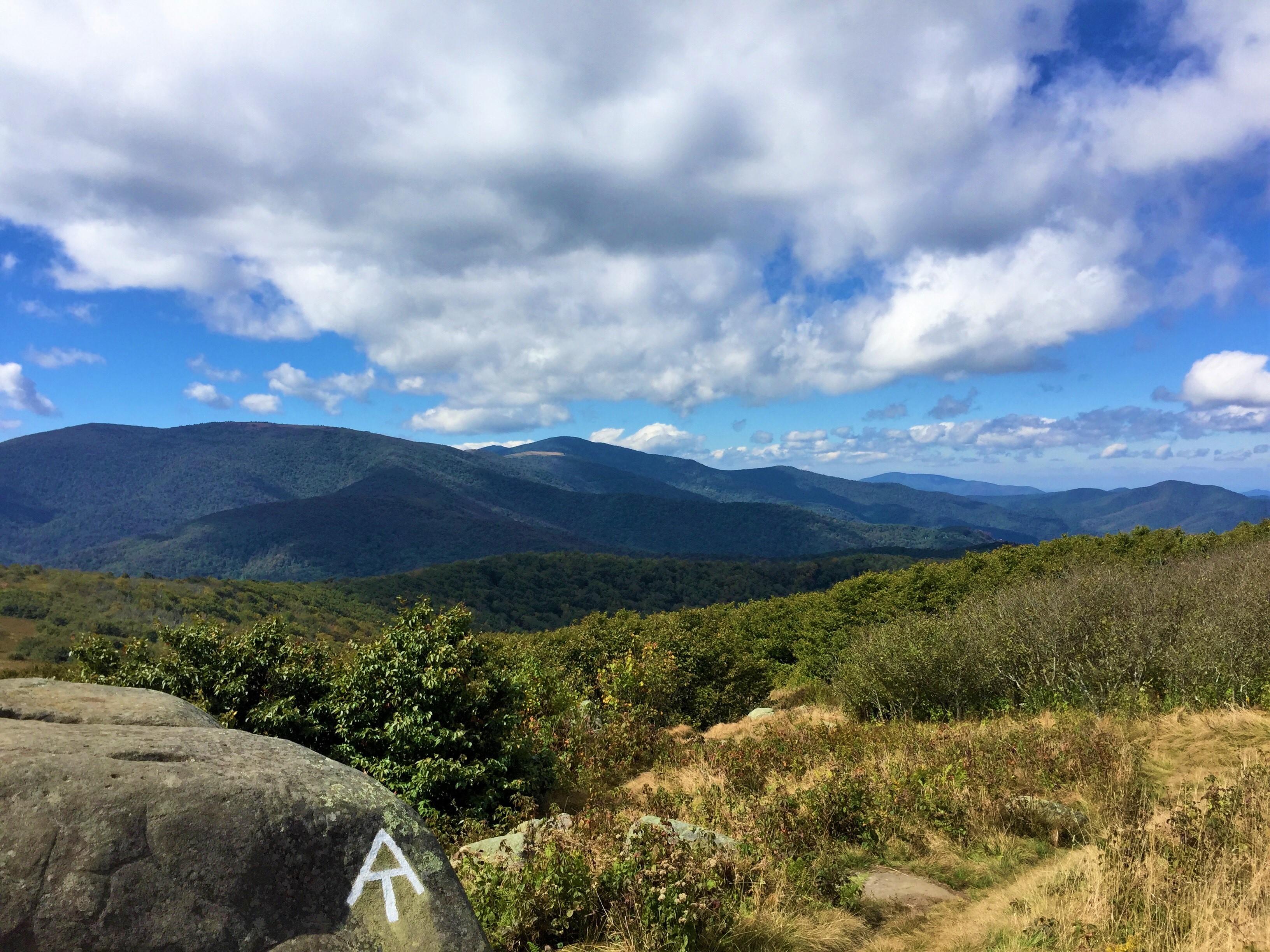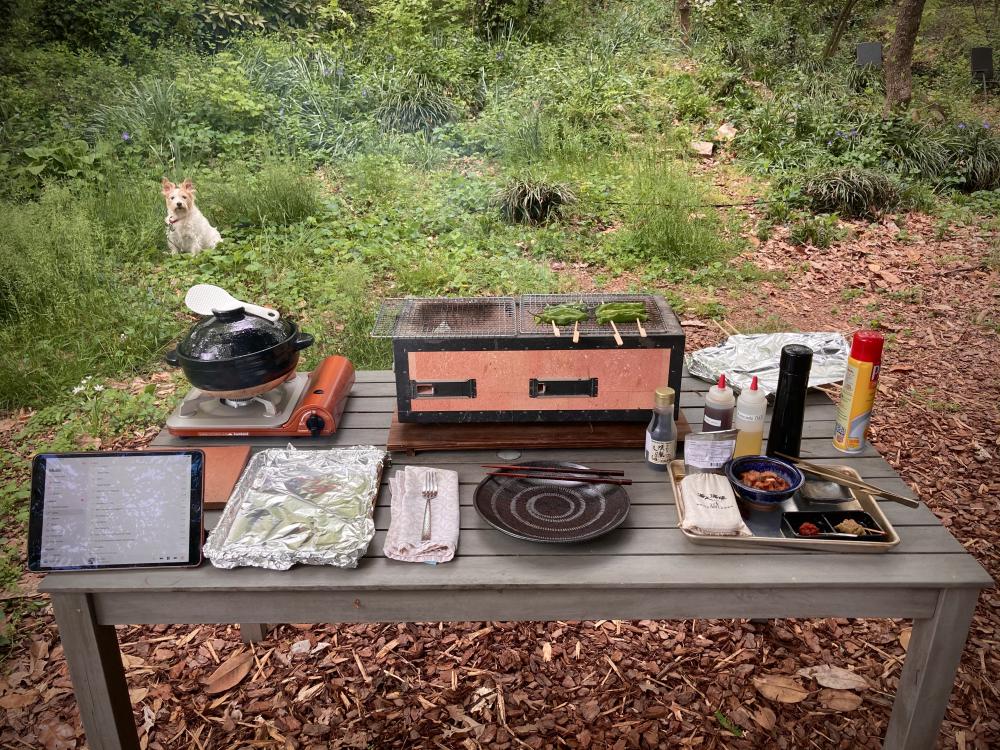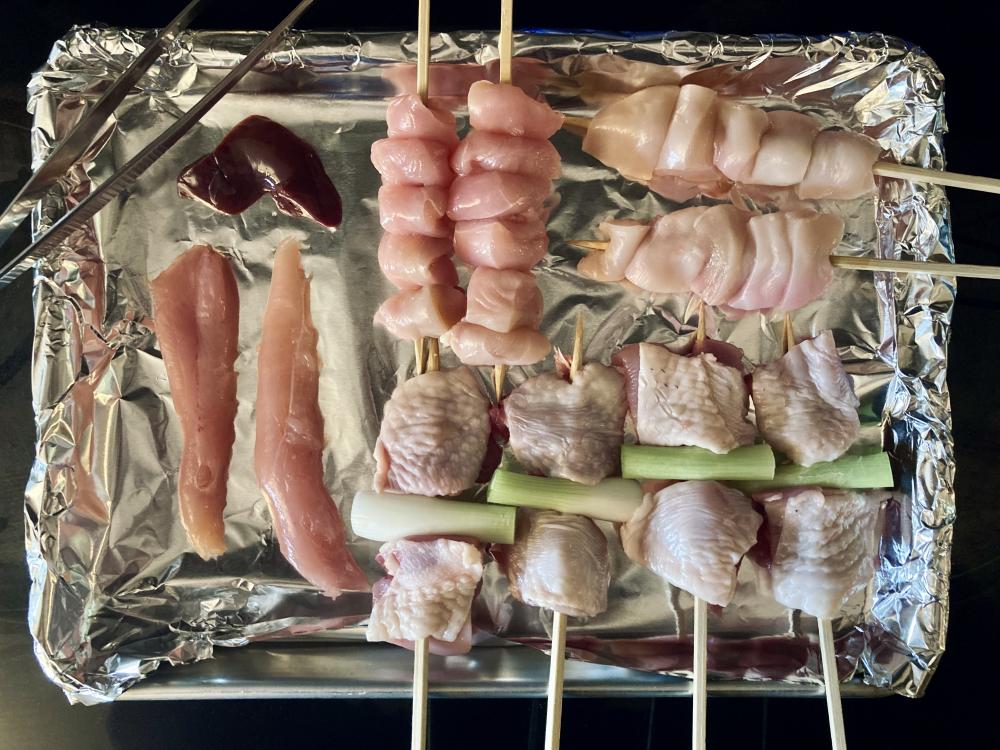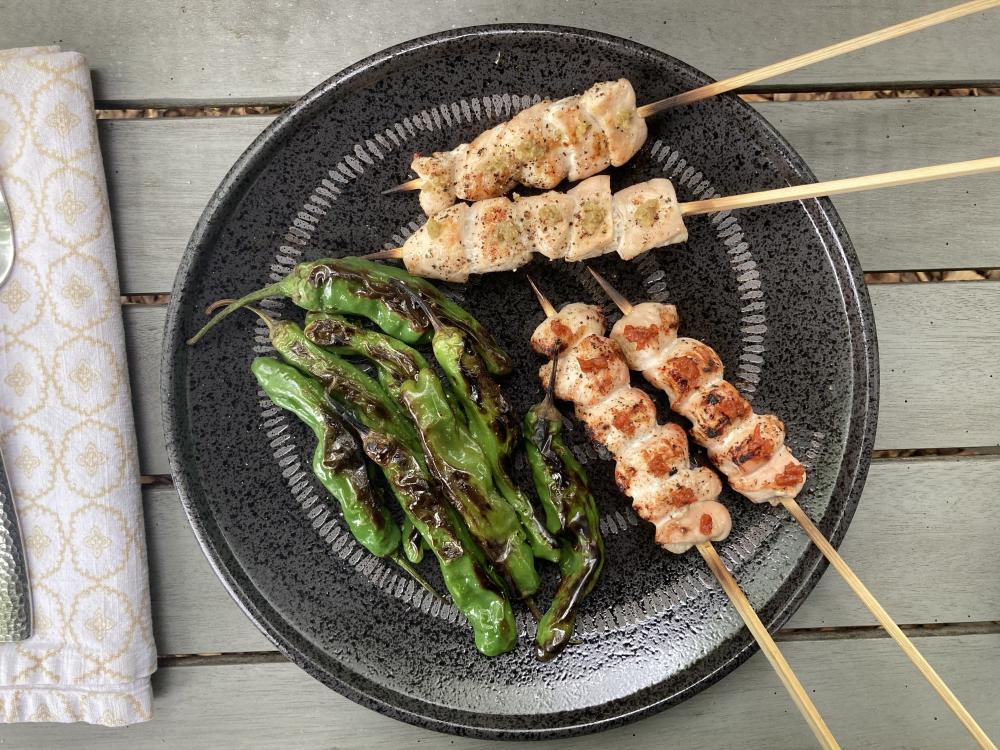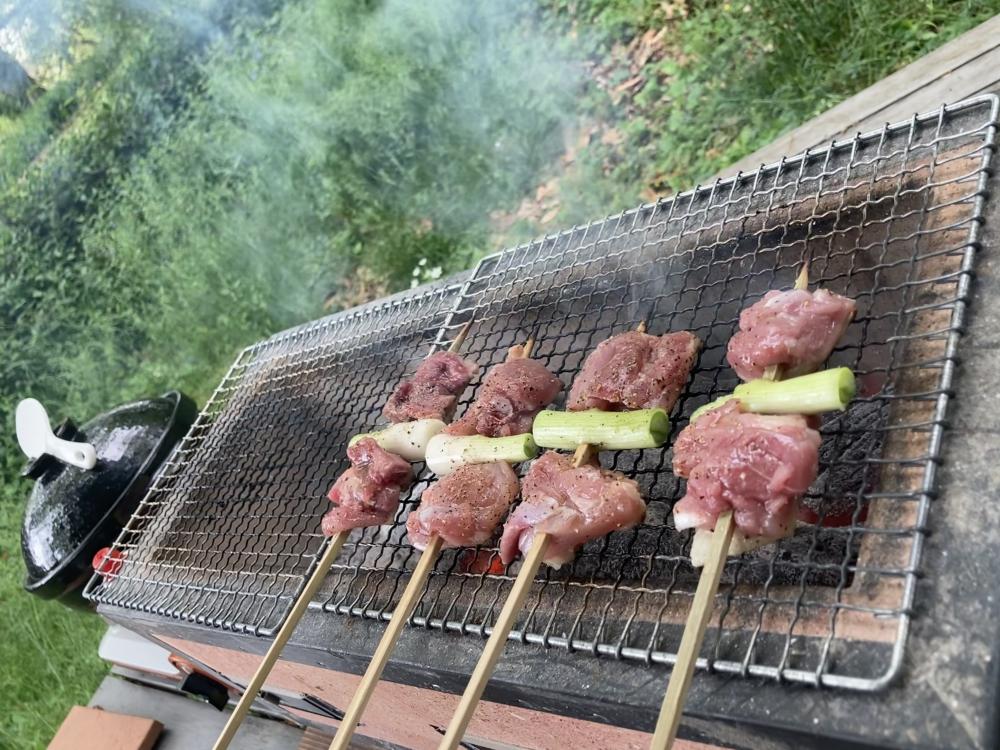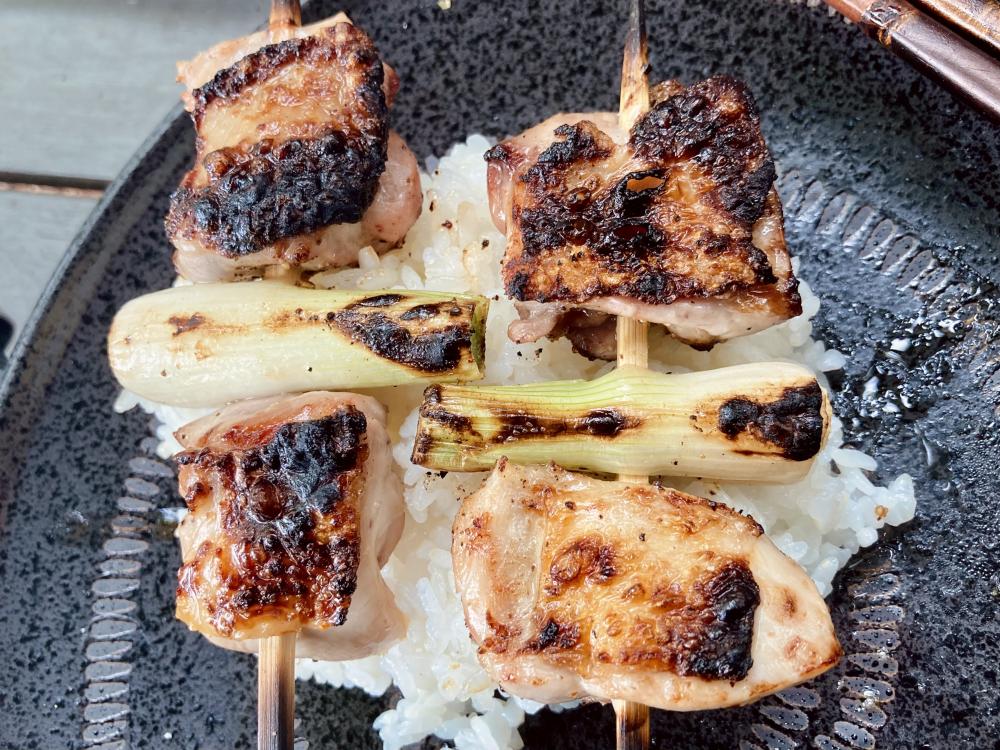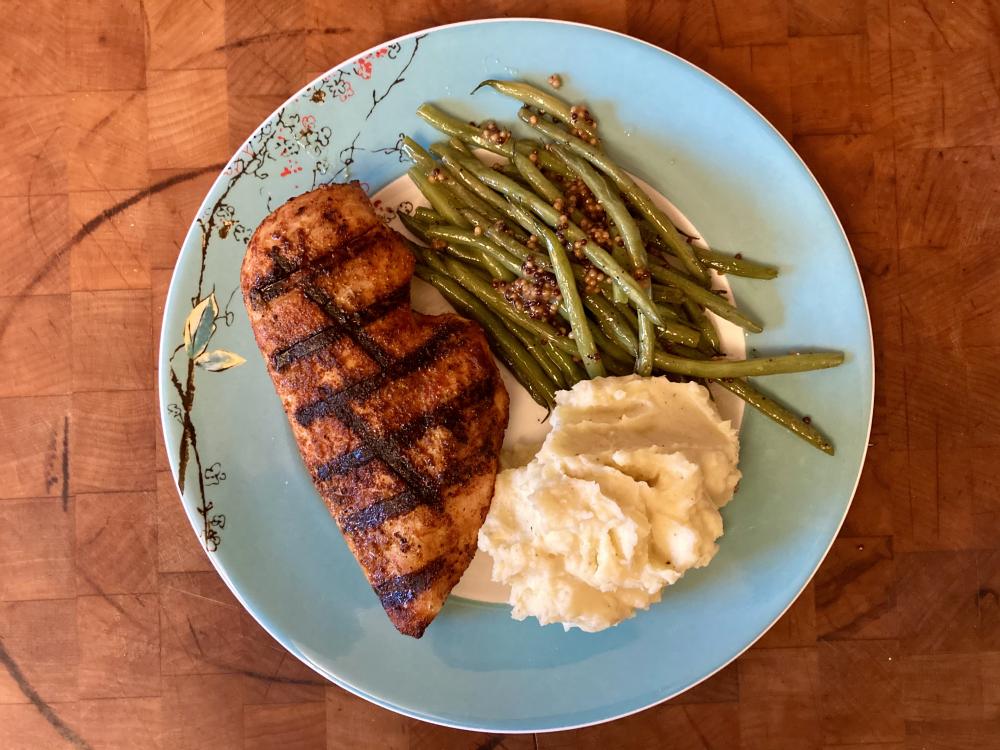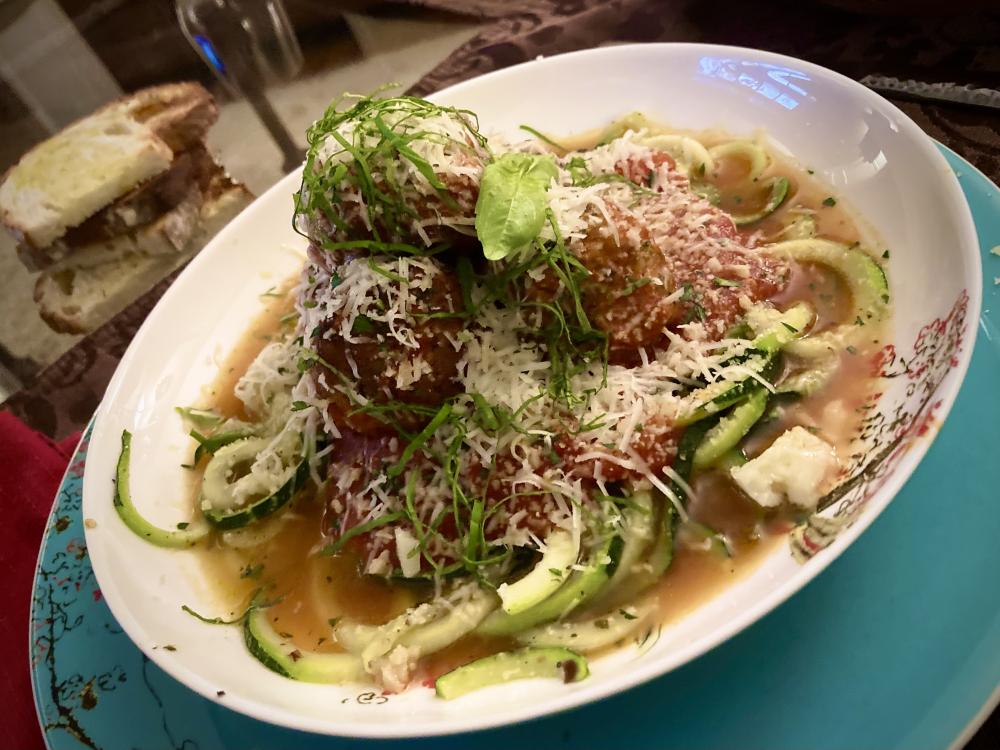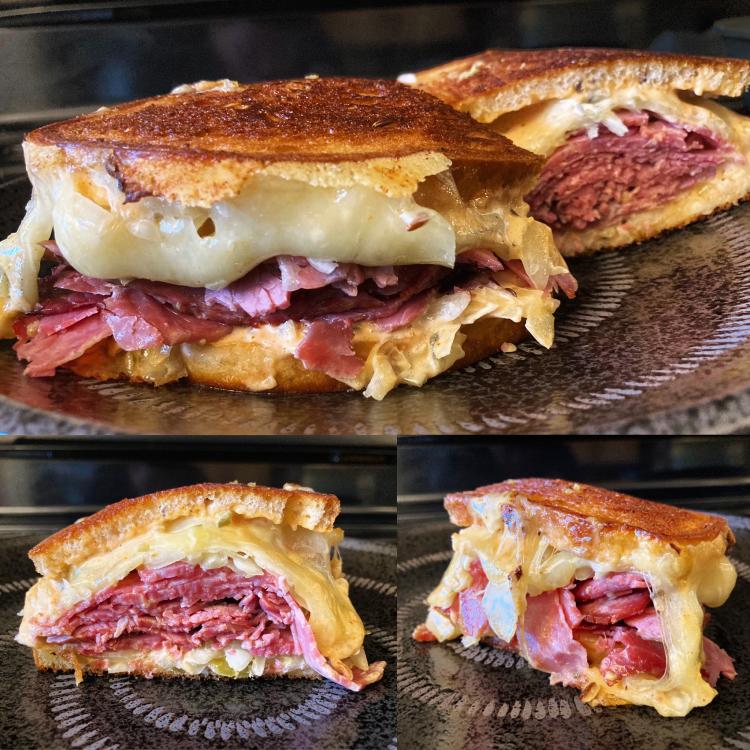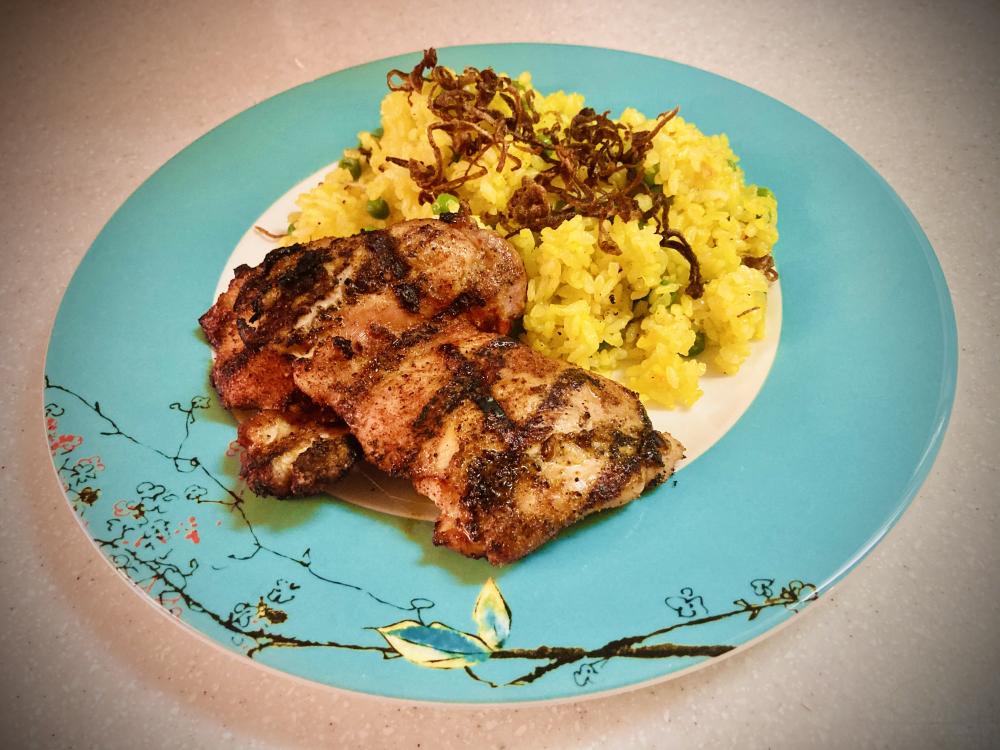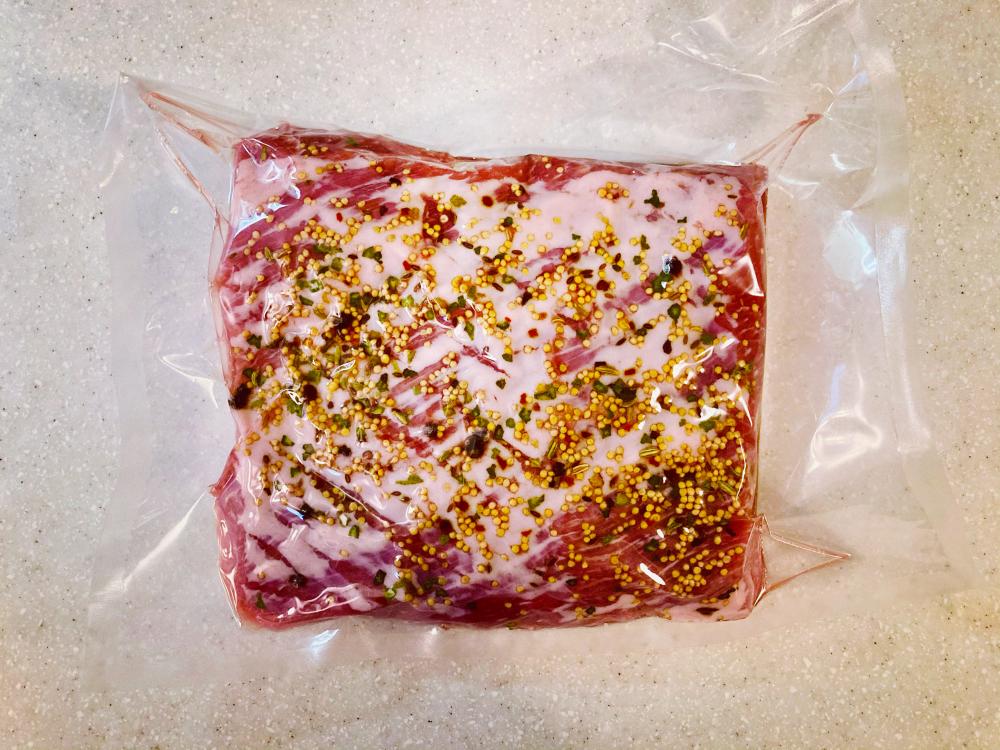-
Posts
1,807 -
Joined
-
Last visited
Content Type
Profiles
Forums
Store
Help Articles
Everything posted by btbyrd
-
I ordered some like three days after it went on sale. But it's still probably 6-7 weeks out. Will report back once I've had the chance. But if your only exposure to this pasta is from the celebrity blogosphere, I highly recommend listening to Dan Pashman's podcast (The Sporkful) about the development process that went into making this pasta. It's quite the journey. Here's a link to the first episode of the 5-part series.
-
Celebrating my second dose of Pfizer with yakitori al fresco. Joyce Farms poulet rouge. One breast, two thighs, two tendonless tenders, and a liver snack for Rebel. Shio breast with yuzu kosho; shoyu breast with kanzuri ; shishitos. Thigh with onion over donabe rice. Dunked in smoked soy sauce. Kimchi on the side.
- 913 replies
-
- 17
-

-

-
Grilled “barbecue” chicken, mashed potatoes, and green beans. I make this at least every other week.
-
I don't see anything special about these pans. Stainless/carbon/iron pans are metal utensil friendly. If you deglaze any hot pan after cooking protein in it, the fond will come off.
-
Z noodles aren't really my choice either, but they do serve to lighten up what could otherwise be a quite heavy meal. Pre-nuking is a great idea; I usually pre-salt, drain, and then barely cook them in a very hot pan. I forgot the pre-salt this time, and they got more-than-barely-cooked while I lollygagged cutting herbs. Oh well. I have not tried the gelatin option on the meatballs, as that apparently interferes with browning and browning is a priority. And in this zoodily case, I'm glad I didn't include the gelled broth, as that would have exacerbated my already soupy situation.
-
Meatballs with red sauce and zucchini noodles. Daniel Gritzer’s Serious Eats meatballs (minus the optional chicken gelatin) with a well-executed red sauce. I did, however, forget the horrendous watery fallout that comes with zucchini noodles. It has been a year or two since I last made them, and forgot the need for special technique (whatever that is). Happily, enough bread can sop up almost all sins.
-
Time is definitely an issue with SV. You can work around it by cooking strategically, sure, but sometimes you just have to cook something more quickly than lower temps allow. I am a big proponent of cooking in batches at low temps for long times and freezing the surplus, but I only buy corned beef once a year and I don't have unlimited freezer space, so my stores are usually depleted sometime in the fall. This time, I was in a time crunch to make a Reuben kit/gift-bag for a family member who was returning home after a long hospital stay, and I'd already eaten all my frozen 48/140F corned beef from last year. Even the best True Students of SV sometimes need something cooked right-the-****-now. This was one of those times. As for the moisture loss and acceptability, I honestly don't think it mattered for the way that I was preparing it. I slice my corned beef across the grain as thinly as is possible without the use of a deli slicer. If you're going to eat big hunks of corned beef and cabbage, or for some reason like really thick slices on the sandwich, it's probably worth it to go the extra time. But if you like it thinly sliced? And are going to be slathering it with Russian dressing, kraut, and melted cheese? I don't think that the extra time makes for a better product. I'm not even sure it makes for an appreciably different product by the time it's on the plate; my Reuben was as delicious as it always is (and I've always gone 48/140 previously). Of course, I didn't do the Pepsi Challenge and compare them side by side. But the meat was tender and not-at-all-dry. You could have piled it twice as high and still bitten cleanly through it without a struggle (except, perhaps, for the initial discomfort of unhinging your jaw). Even though the brisket was cut from the flat, it was nevertheless on point. Way beyond acceptable. 10/10, would make again.
-
In my high temp experiment I ended up going for 9 hours at 175F. Definitely had more moisture loss than 48hrs at 140 and had a firmer texture, but for the purposes of making a delicious sandwich, it was a perfectly acceptable time/temp combo. Obligatory Reuben: I also made some pastrami, but it’ll be a few days before I feel able to eat such a sandwich. Need some time to recover from this one!
- 797 replies
-
- 11
-

-

-
-
Tis the season, and I’m looking for times/temps. I usually go 140F for 48hrs, but want to go higher/faster this year. Kenji suggests 180F for 10 hours. Anyone got experience with higher temps?
-
It's Petit Jean bacon. I've had their regular pepper bacon before, though it was years ago, and recall it being decidedly peppery.
-
Since the Zingerman's sale is on through the end of the month, I'm updating this to add that I didn't care for their Arkansan long pepper bacon. It is very light on smoke and the pepper was basically undetectable. It was a very "porky" bacon, which isn't really what I go for. The Neuske's is as delightful as ever though: quite thick with nice campfire smoke.
-
The Paragon spec sheet lists the max temp for the cooktop at 500F/260C. Portable induction units typically top out around this range to avoid overheating. For portable/outdoor searing, I highly recommend the Iwatani 35FW butane burner.
-

Does xanthan gum prevent gelatin from setting, or vice versa?
btbyrd replied to a topic in Pastry & Baking
What fruit are you using? Many fruits contain enzymes that can interfere with gelatin setting. Overly acidic fruits can do the same. -
+1 for testing. I can't imagine cooking potatoes on a timetable.
-

Combustion Inc Wireless thermometer probe by Chris Young
btbyrd replied to a topic in Kitchen Consumer
This video from Chris hints at some of the techniques that may be emphasized by Combustion Inc. and the smart app that will be paired with the device. The technique he examines here uses two probes: one to measure the core temp of the protein and one to measure the temperature just below the surface. You start out with your oven at a relatively high temp (he uses 400F) and then turn the oven down to a much lower temp (like 225F) after the surface reaches the desired doneness. This technique requires the use of two thermometers, or requires you to use one probe that you move from the surface to the core when you turn the oven temp down. The Combustion Inc product should let you do this with a single probe with 8 sensors that can monitor the core temp of the meat, the surface temperature, and the oven temperature - and can track these across time in an app, and, say, give you an informed estimate of when the core temp will be reached. This should enable even cooking in a faster amount of time than just using a low oven the entire time. SV-like results in "turbo" fashion. But I wonder how much time is actually saved on your average roast. -

Combustion Inc Wireless thermometer probe by Chris Young
btbyrd replied to a topic in Kitchen Consumer
This isn't a Kickstarter; they're not asking to be funded in advance. Waiting is the only option. -
Bag juices are a mixed bag. They're shot through with all sorts of protein and gunk that requires a separate step to deal with in order to make the bag juices useful. One way to do this is a quick boil and strain. The chunks will flock together and form a raft which can be removed easily. The resulting juices are clear but flavorful and gelatinous. They're useful as a liaison to sauces and stocks, but won't alone yield a traditional pan sauce because those are built around browned protein bits (fond) that you've removed in the boiling step. This leads us to the second strategy, which is to reduce the bag juices fully, evaporating all moisture, and then frying the gunk to create a fond. Once the gunk has browned, deglaze with your liquid of choice, and voila -- a pan sauce. ChefSteps does this in one of their prime rib recipes, and they remark in the video that "it looks like Swamp Thing" while you're reducing it; that's a pretty apt description. I haven't had super great luck with this technique, as there end up being a lot of small lumps in the sauce from the flocked-together proteins. I bet hitting it with an immersion blender would solve this problem. As for how to separate meat from bag jus, I do exactly what you describe: slit open the bag, pour out the juices, then peg the opened bag to the top of the sous vide bath. You can also move the meat to an oven; I wouldn't worry about it drying out, especially if you're cooking a larger cut and/or your oven is set to a low temperature. With all that said, I usually treat sauce-making and SV cooking as separate processes altogether. I make or buy jus and demi glace and use them on their own to make sauces. If I cook something large enough to get significant amounts of jus, I'll boil and strain it, and save it for a later use. It's great to add to braises or soups, or to deglaze a fondy-pan.
-
I have a glass top induction burner and a glass top electric range. I shake my pans all the time and have never scratched either and have been using both for half a decade. I can't imagine putting anything underneath my cookware to try to spare the cooktop or allegedly make cleaning easier. Update: Okay, so I looked at my cooktop closely and there are some fine scratches on the most used burners. They’re not immediately visible unless you’re really looking for them, and I’d consider them to be part of normal wear and tear, especially given how much the cooktop has been used (and how much shakin’ has been goin’ on).
-
You can get the exact same sharpener Wasabi sells for $120 for $30 on Amazon. It's -- how shall I put this nicely -- low quality. And their knives are garbage. Stay away.
-
Zingerman's is having their annual spring sale, which focuses mainly on cured pork and cheese. I always take the opportunity to pick up a good amount of Neuske's applewood smoked bacon. I'm also trying out some Arkansas long pepper bacon this year.
-
It's not uncommon to use shitloads of soy sauce in marinades.

